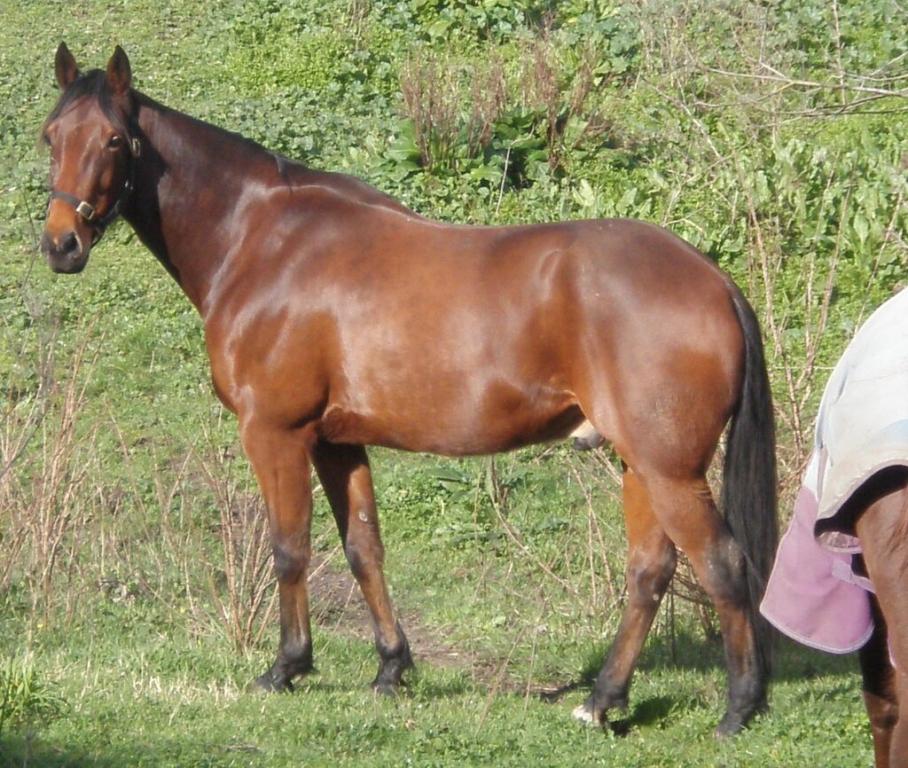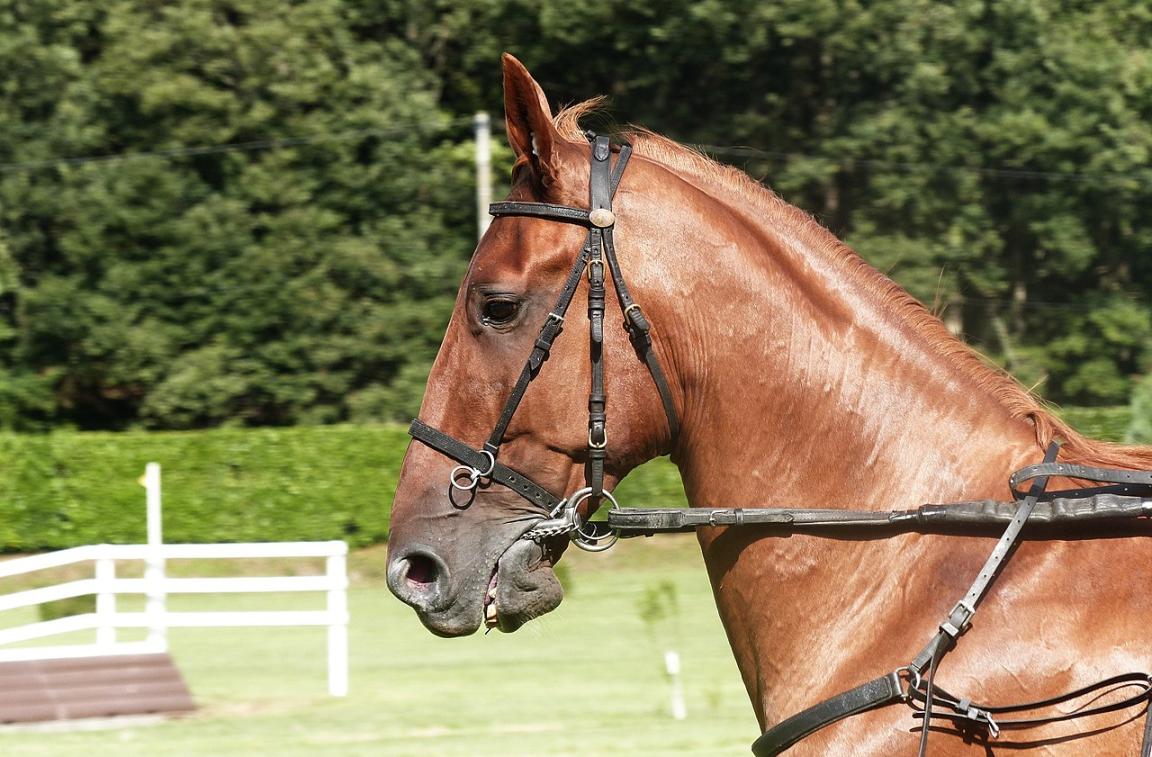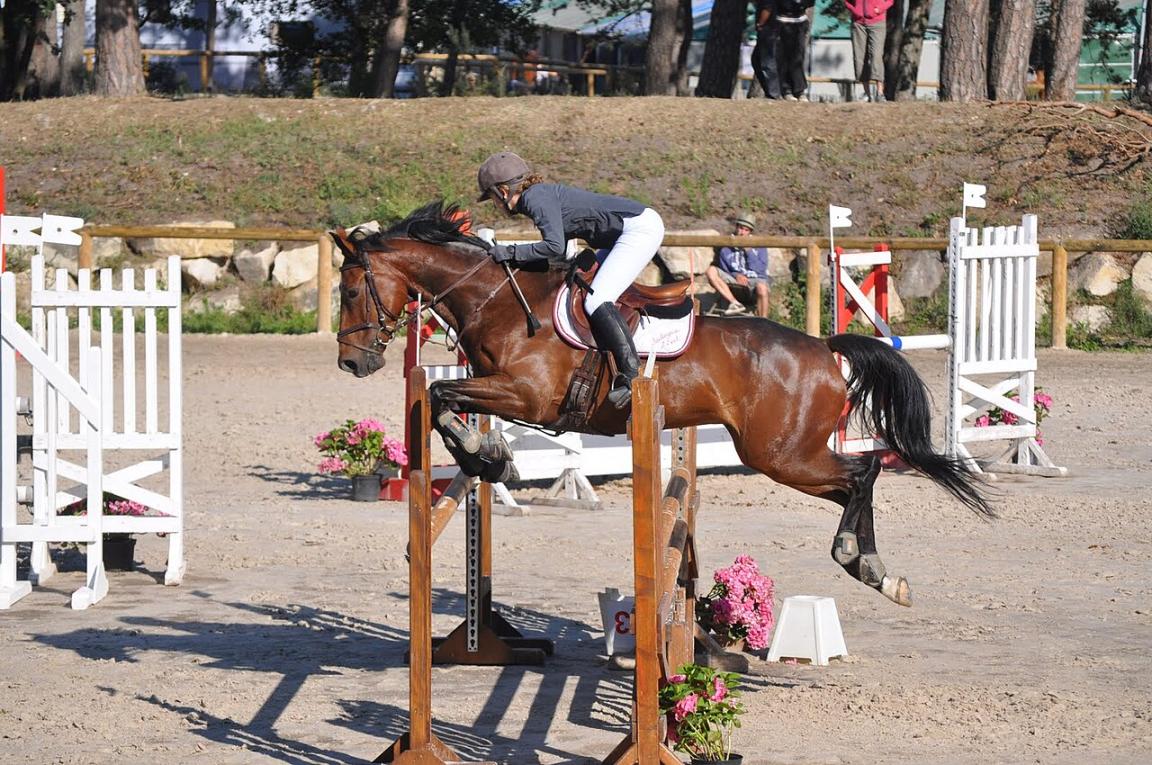
Continent: Europe
Country: France
Weight: 500 – 600 kg
Height: 155 – 170 cm





The French Trotter is a horse breed that originated in France, more specifically in the region of Lower Normandy, which remains to this day the main breeding ground for the breed.
It was around cities such as Caen, Argentan, and Cherbourg that the first trotting races were held starting in 1836, driven by the efforts of Éphrem Houël, a key figure in the development of French horse racing.
The French Trotter was developed through crossbreeding Norman mares with several foreign breeds, including the Norfolk Trotter (England), the Thoroughbred, and the Orlov Trotter (Russia).
Thanks to the temperate climate, lush pastures, and the expertise of Norman breeders, a fast, enduring, and robust horse emerged perfectly suited for both harness and mounted trotting races. The breed’s stud-book was opened in 1906, and the official name “French Trotter” was adopted in 1922.
Since then, Lower Normandy has remained at the core of the industry, both for breeding and training trotting horses.
The main cradle of the French Trotter lies in Lower Normandy, a region historically tied to horse breeding, and especially to the development of trotting races. This area alone accounts for the majority of annual births, thanks to the concentration of stud farms, training centers, and historic racetracks such as Caen, Argentan, Vire, and Graignes.
Beyond Normandy, the breed has expanded into other regions of northwestern France, including Pays de la Loire, Brittany, Upper Normandy, and parts of the Southwest, such as Lot-et-Garonne and Landes.
Breeders are often small family-run operations, with one or two mares that they raise, train, and race themselves, in a system where passion and knowledge transmission are key.
This geographic distribution is not only tied to tradition but also to a network of adapted infrastructure: training tracks, specialized vets, sire markets, and programs for young horses.
The French Trotter plays a central genetic role in the selection of racehorses in France. Originating from a careful crossbreeding between Norman mares and high-performance foreign stallions (notably the Norfolk Trotter, Thoroughbred, and Orlov Trotter), it has produced a lineage specifically adapted to trotting, with speed, gait regularity, stamina, and early maturity as key traits.
Over generations, the stud-book has incorporated controlled infusions of American Standardbred bloodlines, enhancing precocity and performance without compromising sound conformation. This American influence remains visible in modern lines, through notable sires such as Florestan, Granit, and Ready Cash, pillars of today’s breeding programs.
The breed also contributes valuable traits in crossbreeding, such as docility, powerful hindquarters, and harness aptitude. It is officially recognized as a Selle Français influence, allowing some trotting mares to be integrated into French sport horse breeding.
Thanks to the strict structure of the stud-book since 1906, the French Trotter has preserved a strong genetic identity while adapting to the demands of the modern racing industry.
Beginnings of trotting races in France :
The story of the French Trotter begins in the early 19th century, when enthusiasts and cavalry officers such as Éphrem Houël campaigned for the creation of harness races on French soil.
In 1836, the first official races were held on the Cherbourg beach, followed in 1837 by the opening of the Caen racetrack, reserved for horses born in Normandy. These events mark the beginning of a tradition deeply rooted in Normandy’s horse culture.
Gradual formation of the trotter type :
Starting in the 1830s, local Norman mares were crossed with stallions of foreign breeds such as the Norfolk Trotter (now extinct), the English Thoroughbred, and the Russian Orlov Trotter. These crossings aimed to produce a powerful, fast, and enduring horse, suitable for harness and ridden trotting events.
Between 1850 and 1880, the breed’s first foundational sires emerged, including Conquérant, Normand, and Phaéton, whose bloodlines still influence the breed today.
Structural and official recognition :
In 1864, the creation of the Société d’encouragement à l’élevage du cheval français de demi-sang helped organize breeding and racing. The official stud-book for the French Trotter was opened in 1906.
However, the breed was only officially named “Trotteur Français” in 1922. Initially open to any horse that could trot 1 km in under 1’42, the registry was closed in 1937, solidifying the breed’s genetic identity.
Controlled influence of the American Standardbred :
Throughout the 20th century and especially after World War II the French Trotter received measured contributions of American Standardbred bloodlines, via stallions like Florestan, Granit, or Kimberland. These crossings, sometimes unofficial at first, brought precocity, explosiveness, and modern conformation to the breed.
In the 1980s–1990s, these influences were formalized and later regulated by the SECF, before the stud-book was fully closed again.
A racehorse at the top :
Since the 1950s, the French Trotter has become one of the world’s leading trotting breeds. Legendary horses such as Gélinotte, Ourasi, Idéal du Gazeau, Une de Mai, Jag de Bellouet, Ready Cash, Bold Eagle, and Face Time Bourbon have carried French colors to the top of the international stage, particularly in the prestigious Prix d’Amérique, held at Vincennes racecourse.
The French Trotter is renowned for its docile, willing, and well-balanced temperament, the result of a selection process focused exclusively on trotting performance. Horses that are too nervous, unstable, or uncooperative are quickly excluded from breeding or competition, which has naturally led to a breed of horses that are reliable and easy to handle, both during training and racing.
This horse shows remarkable generosity in effort, a fighting spirit, and outstanding physical stamina, making it a determined athlete, capable of maintaining a fast trot over long distances. At the same time, it retains a high degree of adaptability, which facilitates retraining for leisure or other disciplines after a career on the racetrack.
Its calm, steady, and often affectionate personality also makes it a great choice for amateur riders, riding schools, or even animal-assisted therapy projects, provided it has received respectful breaking-in and a well-managed transition after racing.
"Enduring, docile, and driven, the French Trotter combines athletic performance with high adaptability, proving equally reliable on racetracks and in leisure riding."
The French Trotter holds a stable and strategic position within the French equine sector, but its future is closely linked to the evolution of the trotting race market. The breed continues to be selected rigorously to meet demanding standards: early-developing, high-performance horses, suitable for international competition.
Since the early 2000s, there has been a clear effort to balance traditional French bloodlines with American Standardbred influences, now well integrated into the breed’s heritage. This policy aims to preserve the French identity of the model while staying globally competitive.
The SECF (French Trotting Horse Breeders’ Society) has also introduced birth-limiting measures to strengthen selective quality and stabilize the number of births at 8,000 to 9,000 per year. This allows breeders to focus resources on the most promising individuals.
At the same time, the retraining market is growing: more and more retired trotters are finding second careers in leisure riding, show jumping, trail riding, or even equine therapy. This trend adds new value to the breed beyond the racetracks, while addressing animal welfare and social responsibility.
Thus, the future of the French Trotter rests on a dual challenge: to remain a world leader in trotting races, while promoting its sporting and emotional versatility in other equestrian spheres.
The French Trotter is generally recognized for its robustness, endurance, and long career lifespan, traits that have been reinforced through rigorous performance-based selection. However, like all breeds subjected to intense selective breeding for sport, it does show certain genetic predispositions that require monitoring.
One of the most closely studied conditions is osteochondritis, a joint disease with potential hereditary links, associated with rapid growth and the physical strain placed on young horses. Screening and prevention programs are regularly implemented to reduce its occurrence within breeding lines.
Moreover, the French Trotter carries, at a high frequency (around 78%), the DMRT3 gene mutation, commonly referred to as the "gait-keeper gene", which positively influences its ability to maintain stable gaits at high speed. While beneficial for racing, this mutation can be a hindrance to retraining in disciplines that require a good canter, such as show jumping.
Aside from these points, the breed is known for having strong limbs, hard, healthy hooves, and cardiovascular and respiratory resilience well suited to prolonged physical effort. With balanced nutrition, progressive training, and regular veterinary care, the French Trotter can remain in excellent health well beyond its racing career.
The trot is a symmetrical, two-beat, diagonal gait, in which the horse moves a front leg and the opposite hind leg simultaneously (diagonals). In the French Trotter, this gait is naturally very fast and stable, and it is strictly required in races. Any break in gait (canter or gallop) results in disqualification.
The breed is selected specifically for its ability to maintain the trot at high speed, sometimes exceeding 50 km/h, without breaking into another gait.
Born on 05/07/1980
Four-time winner of the Prix d'Amérique (1986, 1987, 1988, 1990), nicknamed “The Lazy King” for his legendary calmness. A true icon of French trotting.
Born on 03/26/1950
Two-time Prix d'Amérique winner (1956, 1957) and winner of the Elitloppet. The first international trotting star.
Born on 05/10/2005
Winner of the Prix d'Amérique in 2011 and 2012, and sire of champions like Bold Eagle and Face Time Bourbon.
Born on 05/03/2011
Prix d'Amérique winner in 2016 and 2017, multiple Group 1 victories. Son of Ready Cash.
Born on 05/22/1997
Prix d'Amérique winner in 2005, and Prix de Cornulier winner in 2004, 2005, and 2006.

French Trotter – TF - Illustration Standard of the Breed

Victories in the Final, in the overall horse, driver, and trainer standings! Loris Garcia had a total victory thanks to his young champion Éclat de Gloire, who was once again perfect and particularly generous in his effort to come out on top after a great race.